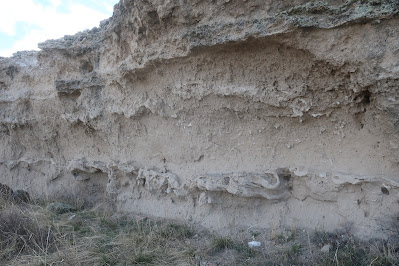When I lived in Colorado I ventured north from Colorado during a 5-day weekend with a scheme of visiting some of the places my father and grandmother told me about from a past family venture they had with my grandfather. One side adventure I wanted to make was a stop at Agate Fossil Beds National Monument (https://www.nps.gov/agfo/index.htm) in the Nebraska panhandle.
My scheme of visiting the Monument got sidetracked. At a county road intersection well south of the Monument I saw someone pop up out of the grass by the side of the road waving a bit frantically. I stopped. The person I saw had fallen aslseep waiting for the rare car that passed by. He needed a ride to a town past the Monument. Given the lack of vehicles, I opted to pass by my planned turn off and took him into town. We went into the cafe where he bought me a burger and beer on the family tab and called home for a final lift. It was a well worthwhile 'good deed' that was a nice part of the trip. However, I did miss the trip to Agate.
A fair bit of time has passed since that venture, but I always hoped to get another chance to see the Agate Fossil Beds Monument. Recently I had another chance.
Heading west across the high plains of western Nebraska
I did have some good luck in that the blizzard that had blown through the area a couple days before had not blocked my route. And the cattle were courteous and politely curious.
The Monument landscape is high plains dissected by a river valley and associated small tributary streams that expose the Miocene age soft sediments protected by a cap of silcrete and limestone lake deposits.
Silcrete and limestone cap above the Miocene sediments.
The fossils were found in fairly soft Miocene sediments. The fame of the site was the discovery of a bone yard of fossil bones in the late 1800s. That pile of bones has been interpreted to have been a watering hole with the idea of many animals dying at the watering hole during a bad drought. Subsequent fossil bone finds in the Monument have added to our understanding of life on the plains 22 million years ago.
I took a hike through a small area of the Monument. No big bones exposed, but there are plenty of fossils.
Miocene soil horizon just below the cap rock
Worm burrow casts and root casts in the soil
Careful study of these soil horizons and small fossils tell a great deal about the setting. There is one burrow cast preserved on the trail that took a few years to figure out.
Paleocastor burrow protected from erosion by a plexiglass box
Paleocastor was a dry land beaver
A collection of some of assembled skeletons from the fossils are on display at the visitor center. I am not a paleontologist. When I taught the paleo lab class I was a half a day ahead of the students at best. I have a deep appreciation of the field and the workers extracting information out of the fossils and the soils and rock the fossils are found in and passing that deep history to casual visitors to museums and in this case a National Monument.
There is another aspect of Agate Fossil Beds that was a delight and links back to my father and grandmothers stories from their travels. They visited the Red Cloud Agency on the Pine Ridge Reservation. That visit left a lasting impression that was passed down to me through their stories. Red Cloud was a friend of James Cook, the rancher that ranched in what is now the Monument.The friendship and exchanges between Cook and Red Cloud resulted in a family collection that the Cooks later gave to the park and are on display at the visitor center.
Red Cloud's people had left a lasting impression on my family. Seeing the display and picture of Red Cloud and the display of Lakota culture solidified that family impression and the connection to Pine Ridge and the complex and at times tragic history of the area.
Photograph of Red Cloud's bedroom










3 comments:
Dan -- Great to find this post, thanks. I love that park, have been there several times, most recently April 28. Did we cross paths?! I find the story of Cook and the gatherings he hosted for the elderly Red Cloud and his people so moving, and I've spent a good amount of time in the exhibit (room) each visit.
I was there on the 10th. I think I was the only visitor that day. All in all I very much enjoyed my venture in the panhandle.
The Red Cloud room was a surprise to me.
I also gained some appreciation of observing micro soil fossils and old soil horizons for extracting a deep history from the soil features - a skill I am still trying to improve.
Please provide coordinates
Kathleen Myers
Post a Comment